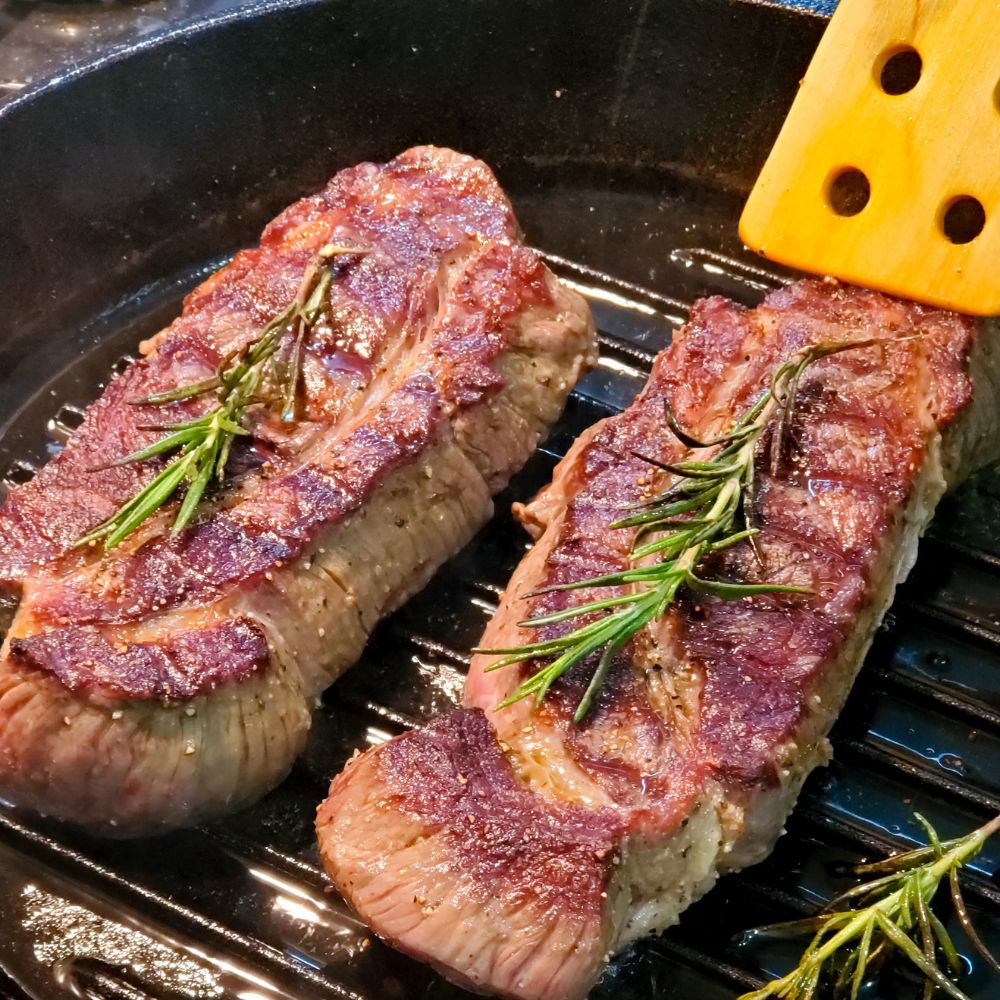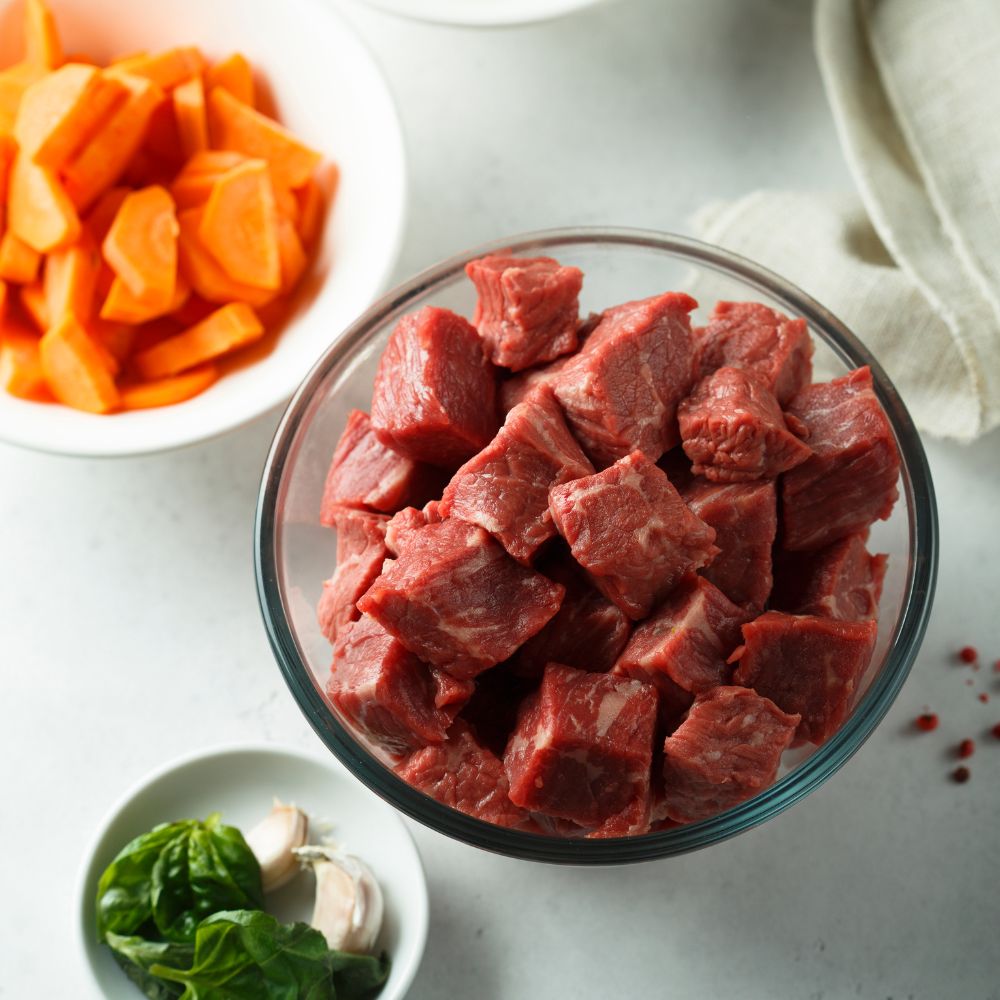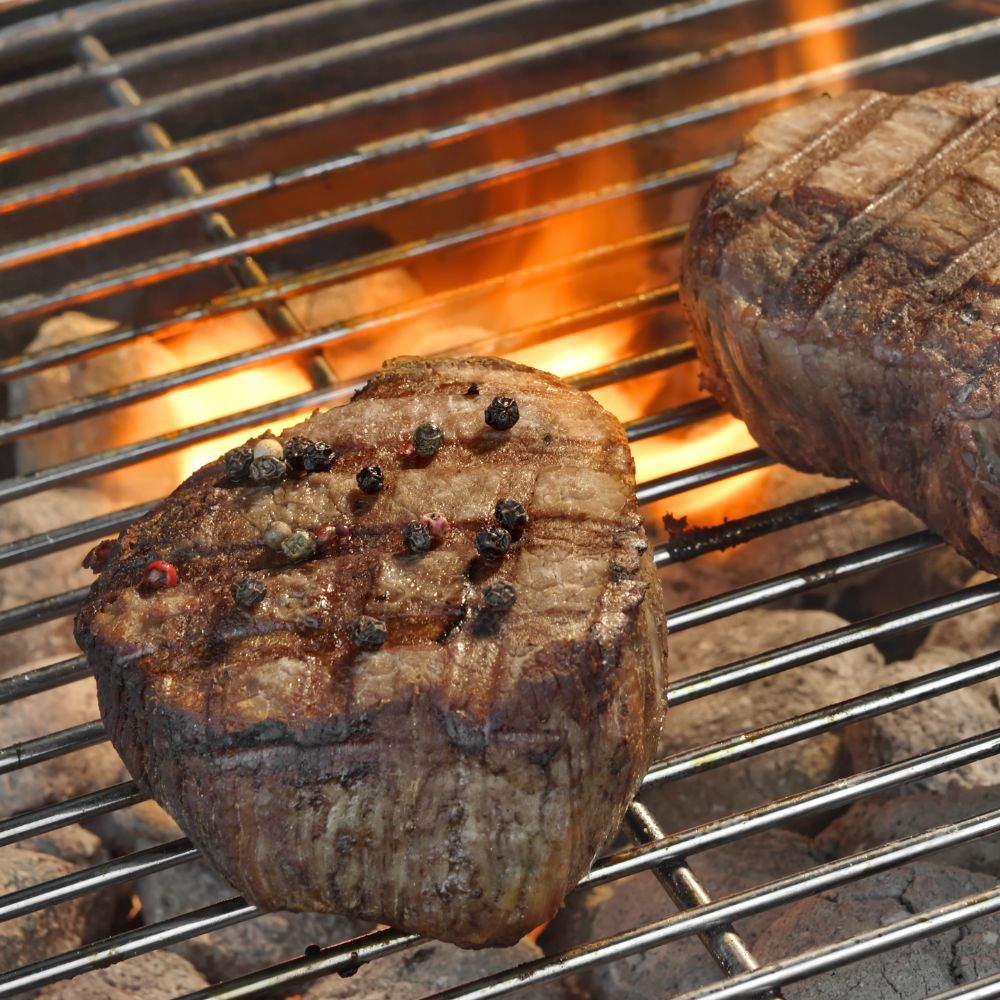How to Properly Fry Rib Eye Steak: This Is How It’s Done
Grilling belongs to the summer season like sun and holidays by the sea. You certainly won't miss out on a juicy rib eye steak. The rib eye steak is of American origin and is similar to the entrecote. It is cut from the ribeye, the beef back between the eighth and twelfth ribs. Its relatively high fat content makes the rib eye the gourmet steak par excellence and gives it its distinctive aroma as well as its characteristic consistency. To make it taste delicious, the rib eye must be properly prepared. In this article, you'll learn more about it.
Rib Eye Steak – Meat of the Highest Quality
If you want to fry a rib eye steak, you should definitely pay attention to the quality of the meat when buying. It is important that you are not put off by the fat content of the rib eye steak. The “fat eye”, from which the steak gets its name, is typical for this cut of meat. In general, rib eye steaks are offered after a certain aging period. This usually lasts 21 days and is referred to as “dry aged beef”. In the past, meat was hung on hooks to age, but today steaks age in vacuum-sealed bags. When it finally makes its way to the grill or pan, the steak has the perfect consistency and does not lose any water during preparation.
Pre-Cooking or Post-Cooking Rib Eye Steak?
The steak should always be at room temperature before preparation. For pre-cooking, the steak is cooked on the grill with indirect heat or in the oven at a temperature of 50 to 60 degrees for an hour. Then the steak is fried in the pan or on the grill for two to three minutes per side until the surface becomes nice and crispy.
Post-cooking is a good solution, especially when time is tight. The steak is first grilled or fried and then covered in aluminum foil and cooked at low heat for around ten minutes.
The Core of the Matter: How to Hit the Perfect Doneness for Your Rib Eye Steak
Doneness is primarily a matter of taste. The range goes from blue (rare) to well done, with every steak enthusiast having their own preferences.
- For blue steak, the meat is still raw inside. It has formed a thin brown crust. The core temperature is between 48 and 52 degrees. The steak is elastic and does not have a firm consistency when pressed with a finger.
- Medium rare meat is still juicy on the inside but has a brown, crispy crust. When pressed with a finger, it remains largely elastic. The core temperature is 53 to 60 degrees.
- Well done is the most controversial doneness. If the steak is fully cooked, the meat can become tough. However, this level of doneness still has many fans. The core temperature is around 70 degrees. The meat has a firm consistency when pressed with a finger.
To measure the meat's temperature, insert a meat thermometer into the steak.
Frying Rib Eye Steak in the Pan
The preparation in the pan is the simplest and most reliable method. A stainless steel pan is best suited for this. Heat a small amount of oil and place the rib eye steak in the pan. There is no need to worry if the steak sticks to the bottom of the pan. Wait one and a half to two minutes until the pores of the meat close. Then the steak can be easily lifted from the pan. Use a spatula to turn the steak and let it fry for another one and a half to two minutes on the other side. To achieve medium rare, reduce the heat and fry the steak for about four minutes on each side.
Grilling Rib Eye Steak
Unlike pan preparation, grilling steaks requires a bit more finesse. After all, external factors come into play. An important factor is the heat source: whether your grill uses charcoal, gas, briquettes, or electricity affects the cooking duration. When grilling outdoors, outside temperature and wind also play a role. This means you have to be particularly careful when grilling. Use a meat thermometer and perform the finger press test to ensure the desired doneness.
Season your steak only after cooking, as the spices can burn otherwise, leaving a bitter taste.
Suitable Side Dishes and Sauces for Your Rib Eye Steak
Purists enjoy their steak without any side dishes. But that doesn’t have to be the case. Steak is wonderfully versatile and pairs excellently with potatoes, vegetables, salad, or rice. The classic steak companion is, of course, herb butter. Try the famous “Café de Paris” variant, which unleashes its irresistible flavor on beef steaks. Herb butter with parsley or garlic are other variations that go excellently with steak.





Leave a comment
This site is protected by hCaptcha and the hCaptcha Privacy Policy and Terms of Service apply.